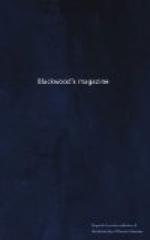respects, be altered, modified, and amended.”
It therefore enacted that different close-times shall
be observed in different divisions of Scotland, the
whole of which is partitioned into twelve districts,
as specified in schedule A referred to in the bill.
We do not know how or from whom the necessary information
was obtained; but we doubt not it was sedulously sought
for, and digested in due form. For example, the
boundaries as to time and space of the second district,
are as follows:—“From Tarbet Ness
aforesaid, to Fort George Point, in the county of Nairn,
including the Beaulie Frith and the rivers connected
therewith,
except the river Ness, from the
20th day of August to the 6th day of January, both
days inclusive; and for the said river Ness, from
the 14th day of July, to the 1st day of December,
both days inclusive.” This is so far well.
But in the ninth district, the definition and directions
are:—“From the confines of the Solway
Frith to the northern boundary of the county of Ayr,
from the 30th day of September to the 16th day of February,
both days inclusive.” Now most anglers
know that the district thus defined, includes streams
which vary considerably in their character, and cannot
be correctly classed together. Thus the Doon,
which draws its chief sources from numerous lakes
among the hills, is one of the earliest rivers in
the south-west of Scotland, clean fresh-run fish occurring
in it by Christmas; while the neighbouring river Ayr,
although existing under the same general climatic
influence, produces few good salmon till the month
of June. It is fed by tributaries of the common
kind. The Stinchar, in the same district, is
also a late river, being seldom worked by the tacksmen
till towards the end of April, and even then few of
the fish are worth keeping. Of course, it requires
to be closed in September, although the fish are then
in good case. These, and many other facts which
might be mentioned, show the difficulty of legislating
even upon the improved localizing principle which it
has been attempted to introduce. However, the
bill referred to, though printed, was never passed.
[Footnote 14: The net fishings in the Tweed do
not close till the 16th of October, and the lovers
of the angle are allowed an additional fortnight.
These fishings do not open (either for net or rod)
till the 15th of February.]
[Footnote 15: It was proved in evidence before
the select committee of the House of Commons in 1825,
that the amount of salmon killed in the Ness during
eight years, (from 1811-12 to 1818-19,) made a total
for the months
Of December, of 2405
Of January, 3554
Of February, 3239
Of March, 3029
Of April, 2147
Of May, 1127
Of June, 170
Of July, 253
Of August, 2192
Of September, 430
------
18,542
It further appears, from the evidence referred to,
that during these years no grilse ran up the
Ness till after the month of May. The months




